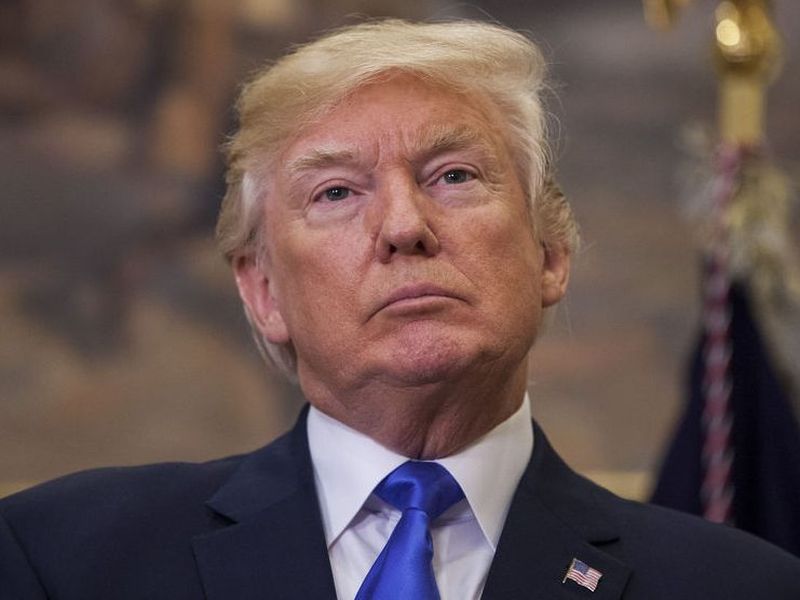FRIDAY, Feb. 12, 2021, (HealthDay News) — Former President Donald Trump was much more ill than was let on when he came down with COVID-19 in early October, sources close to Trump have told The New York Times.
At one point, his blood oxygen levels plunged to the 80s — a level in the low 90s is considered dangerous. There was also talk of the 74-year-old Trump perhaps needing a ventilator as he had trouble breathing, the Times said.
The new revelations come from “four people familiar with his condition” at the time, the newspaper said, and are at odds with much of what was said at the time about Trump’s illness by his personal physician, Dr. Sean Conley.
Conley went to lengths to minimize concerns over the president’s health after Trump first was diagnosed with COVID-19 on Oct. 1, just two days after a televised presidential debate on Sept. 29.
At one briefing, Conley told reporters that while Trump’s oxygen level had dropped to 93 percent, it had never dropped to the “low 80s.”
Sources close to Trump also told the Times that the president’s lungs were found to contain “infiltrates,” meaning his lungs were inflamed and contained fluid and/or bacteria. That signals a serious case of COVID-19, and it shows up easily on chest X-rays or scans as white or opaque tissue.
At the time, Conley said Trump had received X-ray and CT scans, but when asked about the possibility of pneumonia or damage to lung tissue, Conley said only that there were “expected findings, but nothing of any major clinical concern,” the Times said.
On Oct. 2, Trump was at the White House with a fever and having trouble breathing. According to the Times’ sources, he resisted leaving the White House for Walter Reed Medical Center, but finally agreed to do so after being told it was preferable to walk out of the White House on his own than for his condition to deteriorate further, so that he could only be transported on a stretcher.
Trump received oxygen twice while still at the White House, and spent three days in care at Walter Reed. While there, he reportedly received one five-day course of the antiviral drug remdesivir. At the time, medical experts believed that use of the drug would only be warranted in cases where serious lung issues were in play.
Despite Trump’s tough battle with the coronavirus, Conley continued to be upbeat in press briefings, the Times said. In news conferences held outside Walter Reed the weekend of Oct 3-4, Conley pointed to data from Trump’s lung spirometry test, which measures lung capacity.
“He’s maxing it out,” Conley told reporters, “He’s doing great.” However, medical experts typically believe a spirometry test has little meaning in the context of COVID-19.
On Oct. 4, Conley admitted that he “was trying to reflect the upbeat attitude that the team, the president, his course of illness has had. I didn’t want to give any information that might steer the course of illness in another direction, and in doing so, you know, it came off that we were trying to hide something, which wasn’t necessarily true,” the Times reported.
Back at the White House, Trump made a brief appearance on a balcony, tearing off his mask and saluting his helicopter. But doctors watching the scene closely noted that the former president appeared to be using his neck muscles to help him breathe — a key sign that lung function was still impaired.
There was also a major effort behind the scenes to acquire a course of the as-yet-unapproved Regeneron antibody cocktail for Trump, who later claimed it helped him beat COVID-19. According to the Times, Trump reportedly told aides, “I’m proof it works.”
That assertion later became a focus of jokes among top health officials, the Times said, since the drug was being tested in clinical trials to keep people with COVID-19 out of the hospital, something Trump hadn’t managed to achieve.
After being admitted to Walter Reed, Trump was also placed on a regimen of the steroid dexamethasone — again, a course of treatment usually only reserved for patients battling serious disease, experts say.
More information
Learn more about the current treatments for COVID-19 at the CDC.
SOURCE: The New York Times, Feb. 11, 2021
Copyright © 2025 HealthDay. All rights reserved.

